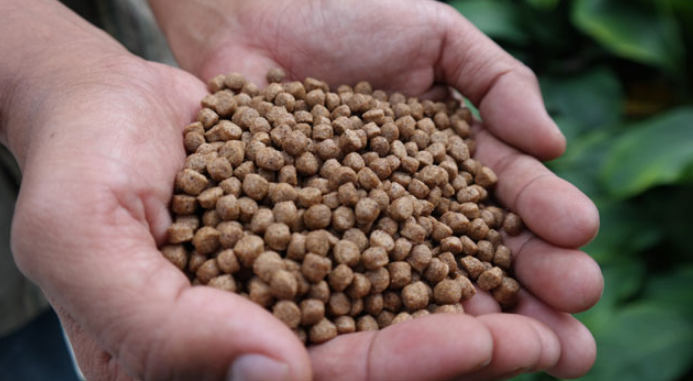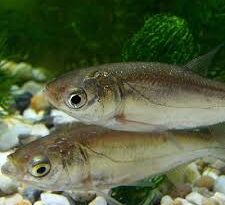The Best Stage to Start Raising your Catfishes for Profit
Some of my readers often ask: ”As a beginner, would you advise me to start raising my fish including catfishes from fingerlings or juveniles stage”? In fact, I love the choice of your words. Using “a beginner” has made the answer to the question very simple.
I will like to advise that as a beginner, you start raising your fish from juvenile stage because by then, they would have grown to a level where managing them will be less stressful.
It takes more experience to raise them from fingerlings to juveniles without having much mortality. So as a beginner, start with juveniles so that your mortality rate can be greatly reduced.
Also note that fingerlings production needs training because it involves some practical details. So, to know about fingerling production, I recommend that you go for training.
Stages of Catfish Growth; What Type of Catfish to Stock (Fingerlings or Juveniles)
It’s important to realize that there are different stages of catfish growth. There are a lot of stages but, while being practical, here are the four main types you can stock in your pond:
- Fingerlings (3 to 4 grams)
- Post-fingerlings (4 – 6 grams)
- Juveniles (6 – 10 grams)
- Post-juveniles (10 grams and above)
I’m not sure if the above taxonomy is universal, but that’s how we know it; just tell everybody what stage of catfish you want and they will know what you mean.
To ensure the information is applicable to you irrespective of where you are, I included information about fish size in grams; an average, good fingerling catfish should be at least 3 – 4 grams in weight while an average, good, juvenile catfish should be at least 6 – 10 grams in weight.
Risk of Stocking Smaller Catfishes (Fingerlings or Juveniles)
It is very important to note that the smaller the catfish you stock, the higher the risk factor. By “risk factor” I’m referring to the following:
Mortality rate: Smaller catfishes are not as stable as more matured ones, which can be really rugged, so their mortality rate is higher.
I’ve seen a pond where 8,000 fingerling catfishes were stocked, only to come one day and find at least a thousand of them dead and floating on the water; this rarely happens with juveniles, but it is more common with fingerlings.
As a rule, my teacher tells me to expect at least 25% of fishes I stock to be dead within 6 months if I stock fingerling catfishes, with most of them dying within 3 weeks of stocking, while you can be sure less than 10% will be dead in 6 months if you stock juvenile or post-juvenile catfishes. All things being equal.
Feeding Difficulty: The smaller your catfish (Fingerlings or Juveniles), the more intensive the feeding.
With juvenile or post-juvenile catfishes, you can easily get away with feeding them once a day right from the day you stock; with fingerling, or sometimes post-fingerling, catfishes, though, you need to feed them twice to thrice a day for a few weeks for optimal results.
You’ll also have to use the broadcast feeding system for longer compared to just spot feeding.
I’ll go into more details when my article on feeding goes live, but broadcast feeding is basically you spreading feed all around the pond to ensure all the catfishes get fed while spot feeding is you feeding them on a spot, where they all come to eat.
Broadcast feeding can be more intensive, especially for bigger ponds and if you have a lot of ponds, and smaller fishes require more of it.
Maintenance: You also have to consider other factors such as changes in water quality, water pollution, predators as well as other factors when the fishes are smaller.
The bigger a catfish is, the more rugged it will be; I’ve seen a big catfish stay alive for up to 6 hours without being in any water; the catfish should be around 6 months old and around 2 kg. You can’t try that with a baby catfish; it will be dead in minutes.
My point is that the older a catfish is, the more mature it becomes and the smaller the risks you have to deal with.
So, if you want to stock, ensure you get the biggest fish you can get; by “biggest”, I’m referring to something in the juvenile/post juvenile stage. For me, anything that is 10 grams plus will be a win.
Putting the Juvenile Catfishes into Your Pond
Once you’ve gotten your juvenile catfishes, you want to make sure they are not stressed too much from the point of transportation to being introduced into your pond.
This means:
- You want to avoid exposing them to heat
- You want to avoid completely covering the container you put them into before they get to your farm
- You want to avoid shaking the container too much; if you have to transport them on bad road, drive slowly
Once the fishes get to your farm, the next step is to introduce them into your ponds.
Now, the worst way to go about this is to just pour/empty the container into your pond; that is faster, but it stresses your fishes. If you do this, you could get to farm the next day to find dead fishes floating on your pond.
The best way to go about this is to slowly put the container into the pond (that’s if it is small; if it is big, look for a small container and do this slow and steady), let the natural pond water mix a bit with the water you brought the fishes in for a while before finally releasing them into the pond.
Doing this ensures they don’t suddenly get introduced to the water, which probably has different temperature and qualities from the one they were brought in; remember that there were possibly thousands of them in a small container just awhile ago, only to be suddenly released into a large body of water that will seem like an ocean to them.
They get some time to adapt before being finally introduced into the massive water in the pond.
Doing this for approximately 30 seconds to 1 minute before releasing the fishes into the pond should be fine.
Read Also: The Most Lucrative between Production of Fish Fingerlings or Raising them to Table Size

A Good Way to Feed Catfish
In catfish farming or any other type of fish farming, feeding is one of the most important things. Some people may think that feed catfish is simply throwing the feed to the pool, but that is not true. Although it may seem easy and simple, there are many things to be considered if you want the catfish to grow well and thriving.
1. Size of feed
In general, catfish feeding should be based on how old or how big your catfishes are. There are many sizes of catfish feed available, so it shouldn’t be too hard to find one that suitable with your catfish size. When the catfish get bigger, you can feed them with a bigger food size.
When you are able to grow really big fishes, for example when your catfishes reach 1 kg in weight or more, you can consider the 8 or 10 mm feed sizes. It will be more practical and easier to feed, but if you cannot find a bigger feed, the regular one should be fine.
2. Feeding frequency
Just like how the feed size matters in feeding the fish, you should also pay attention to how often you feed them. Different stages of growth require a different frequency of feeding too. Fingerlings of 3–4 grams weight should be fed twice per day.
When they reach the post-fingerlings and juvenile stage, you can keep feeding them twice a day or reduce it to once a day. Next, after they reach the post-juvenile or above that, you can reduce the feeding frequency to once a day.
3. Types of catfish feed
What do catfish eat is a common question to ask for a beginner in fish farming. Basically, you can get any type of catfish feed on any fish store around your area. Some bigger store even has organic fish food that is good for your fish’s growth. Give your catfish an adequate amount of protein to keep them growing well.
Aside from different sizes, there are also floating feed and sinking feed. The floating feed is those that keep floating after you spread them in water, while the sinking feed is those that immediately sink after you throw them into the water.
The floating one is good for the smaller size of fishes like the fingerlings or the juveniles stage. While the sinking one is better for bigger fish as they are naturally bottom feeders.
4. Catfish nutrition
To yield good production for the harvest, you need to pay attention to the nutrition you give to the fishes. While ready to fed catfish feed is usually packed with nutrition, you can also give them more natural feed like duckweed, for example.
Duckweed is known as a great fish feed and is commonly incorporated in fish farming. But how much duckweed to feed catfish is good enough?
Duckweed has been known for its high nutrition content. It also contains a high concentration of amino acids, methionine, and lysine which is good for the growth of the fishes. You can feed them with duckweed as an alternative source of food for them.
5. How much do you feed the catfish?
The portion is also things to consider when you feed catfish. It is obvious that lack of feeding will hinder the growth of your catfishes and may make them appear smaller than the size they should be in respect of their age.
Additionally, you should also be careful not to overfeed them. However, understanding whether your catfish is already satiated may not be easy for beginner catfish farmers.
To understand whether your fishes are well-fed or not, you have to observe them carefully. When you are using the floating feed type, it should be easier because you only have to make sure that there is no excess feed on the surface of the water.
Floating feeding should be finished within 5 minutes after you stopped feeding the fishes. When it is more than that, it will be probably just going to be a waste and you should not add more feed.
For the sinking feed type, you need to observe the response that your fishes have. When they respond actively and eagerly when you feed catfish, it’s most definitely that they are hungry.
When the reaction reduced and they become calm, it means that they start to feel full. Another sign is that the fishes are not popping their heads out of the water.
Every fish farmers need proper knowledge of how to feed catfish. It goes beyond spreading the fishes feed only, but also considering their nutritional needs and the surrounding conditions.
Well-fed and stress-free catfishes will be able to grow healthily and thrive. This will result in good production results which will lead to profitable business for catfish farmers.
Read Also: Lucrative Watermelon Farming Business Guide
Do you have any question, suggestion or other contributions? kindly use the comment box provided below for all your contributions. You are also encouraged to please kindly share this article with others you feel can benefit from this information if found useful enough as we may not be able to reach everyone at the same time. Thank you so much for sharing!










hi,am Isaac and I’ve been started the catfish business which a friend of mine introduce me in.but as soon as i started the fingerlings just died within a week, so please i need ethics in catfish farming from you guys.
thank you